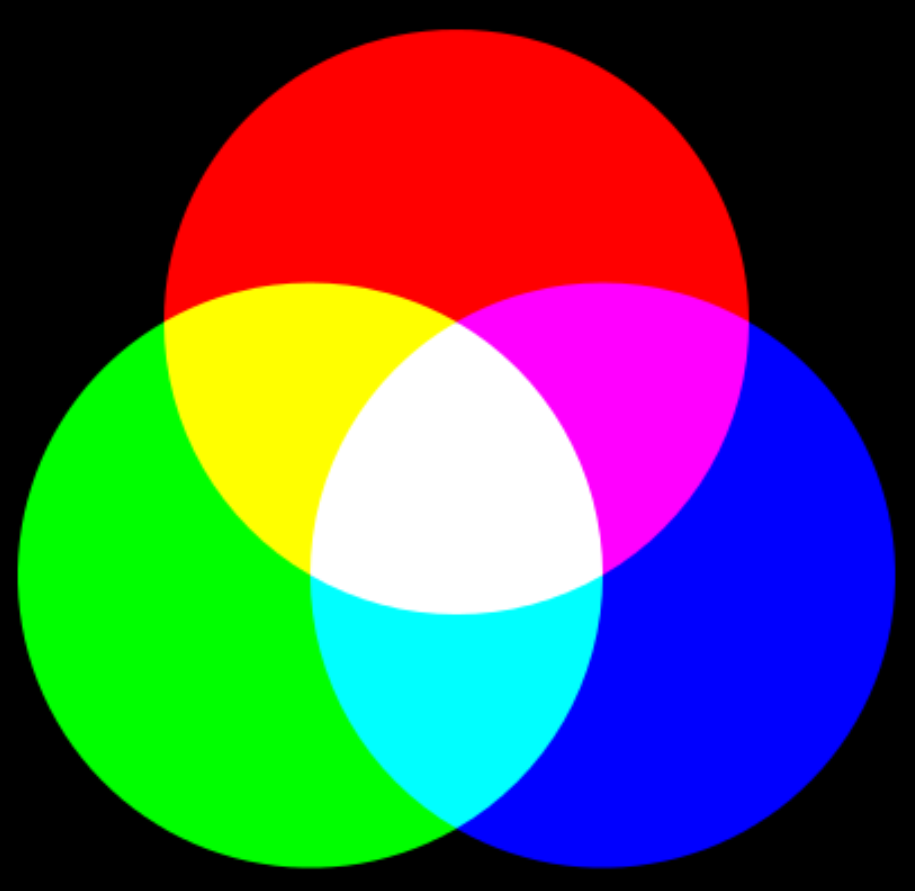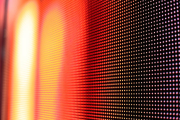One aspect that makes LED lighting unique is the various color options available. Many are familiar with the different light temperatures: warm white, cool white and natural daylight. Though, RGB LEDs are also growing popular for their beautiful colors, along with the versatile uses and benefits. Want to know what they are? Well, here we go…
What is RGB color?
RGB is an acronym for the colors red, green and blue. When those three colors of lights are combined and used together in a single unit, it’s able to create and display over 16 million color options. How is it that many? Each of the base colors has numerous different shades – over 250 – so, in simple terms, when you mix and match all of those shades, you get over 16 million colors.
Additive versus subtractive colour system
The additive colour system is based on the mixing of different light colours. When two primary colours are mixed, you get a lighter colour. Mix the three primary colours (red, green and blue) and you will get white light. Unlike with paint, yellow is not a primary colour.
The best example of the additive colour system can be found in computer screens and televisions. Use a strong magnifying glass and you’ll notice that every pixel consists of a red, green and blue sub-pixel. By playing with the brightness of these sub-pixels, you can create any light colour.
The image below shows the mixing scheme of the additive colour system. It looks like this:
Red + green = yellow
Red + blue = magenta
Blue + green = cyan
Red + blue + green = white
The additive colour system is not to be confused with the subtractive colour system, which is used e.g. for print. This system is called ‘subtractive’ because less and less light is reflected when mixing colours, mixing results in darker colours. The primary colours of the subtractive colour system are cyan, magenta and yellow.
How does RGB LED work?
An RGB LED is basically an LED package that can produce almost any color. It can be used in different applications such as outdoor decoration lighting, stage lighting designs, home decoration lighting, LED matrix display, and more.
RGB LEDs have three internal LEDs (Red, Green, and Blue) that can be combined to produce almost any color output. In order to produce different kinds of colors, we need to set the intensity of each internal LED and combine the three color outputs.
By configuring the intensity of each LED, you can produce other colors as well.
For example, to produce purely blue light, you’d set the blue LED to the highest intensity and the green and red LEDs to the lowest intensity. For a white light, you’d set all three LEDs to the highest intensity.
RGB LED controllers work on a much simpler principal. They alter the power on each of the three channels (red, green and blue) to create a specific colour mix. To generate a purple colour, for example, the red and blue channels would be wound up, and the green channel turned off completely. Mixing blue and red light will give you the purple you are looking for. It is not as precise as DMX, but more than adequate for most residential and commercial applications where cost is a factor.
Three types of RGB lighting
RGB lighting can form all colours, ranging from warm orange to cool blue. It is often used in LED strips. In RGB LED strips we distinguish three types:
Classic RGB:
a LED strip with triple diodes (red, green and blue on one diode). To form white light, the three diodes are used simultaneously. With these classic RGB the white light may contain traces of other colours. This white light will not have the same brightness as the white light of a true white LED.
RGB+W:
A LED strip with triple diodes (red, green and blue on one diode) and a separate white diode for pure white light. Because of the larger distance between the two diodes of the same colour, evenly distributed light is not guaranteed. With this type of RGB, the distinction between the different light beams will be easier to see.
RGBW:
A LED strip with quadruple diodes (red, green, blue and white on one diode). Provides nice evenly distributed lighting in any colour.
Advantages of RGB LED lighting
Healthy & relaxing
An article on Well + Good covers the benefits of having colored LEDs in the shower. It says they are “emotionally therapeutic and potentially beneficial to your skin.” They’re explained to have anti-inflammatory and antibacterial effects. This reason alone sounds good enough! Green light supposedly reduces tension while pink is great for drawing in the feeling of love.
Endless color options
Color LED lighting not only look pretty, but they’re used for areas such as stages and displays. That’s when customized lighting is needed the most. Many times, there are countless of color options available. For example, our RGB under cabinet lighting features over 16 million color options. If you can’t find the color you need then…well, it might not exist.
Less heat
You would think since RGB lighting is so vibrant and strong that they would emit a lot of heat. Well, you’d be surprised to know that it’s actually the opposite. LEDs use less energy, so naturally emit less heat (and are cheaper!) There’s always a benefit of knowing you’re saving money and resources.
RGB is widely used in LED lighting, Tachyonlight has rich lighting experience, you can have a look at the following picture which is the project we have done.
The appeal of RGB LED lights is undeniable. They last longer, burn brighter, and feature impressive technology capabilities that other lights can’t complete with. If you have any needs pls contact us.










